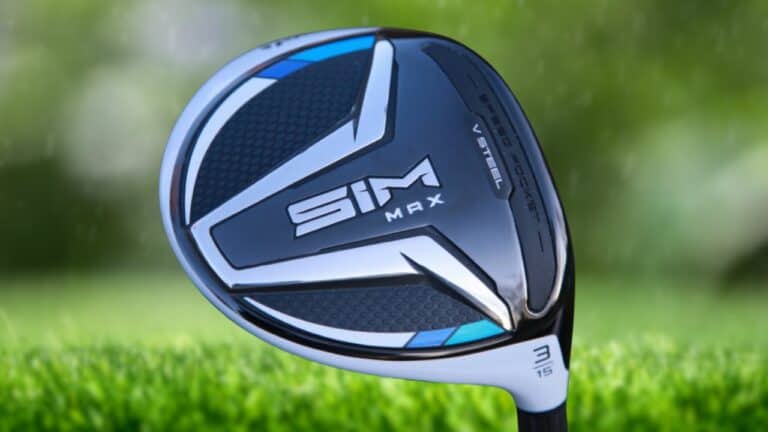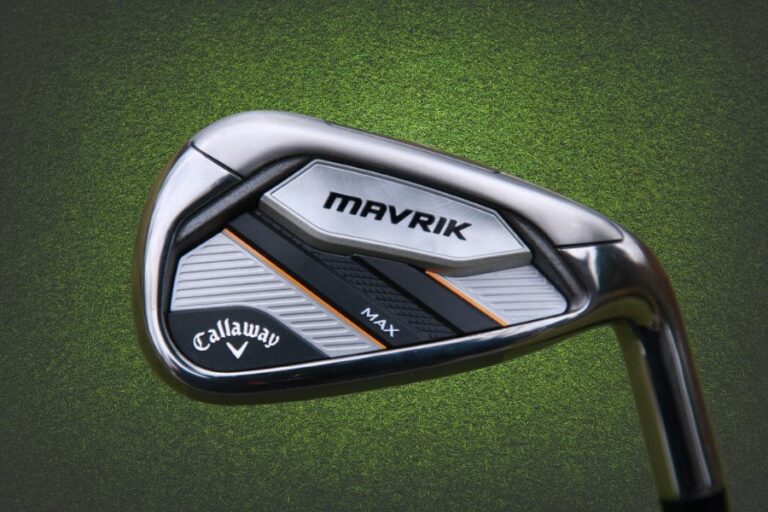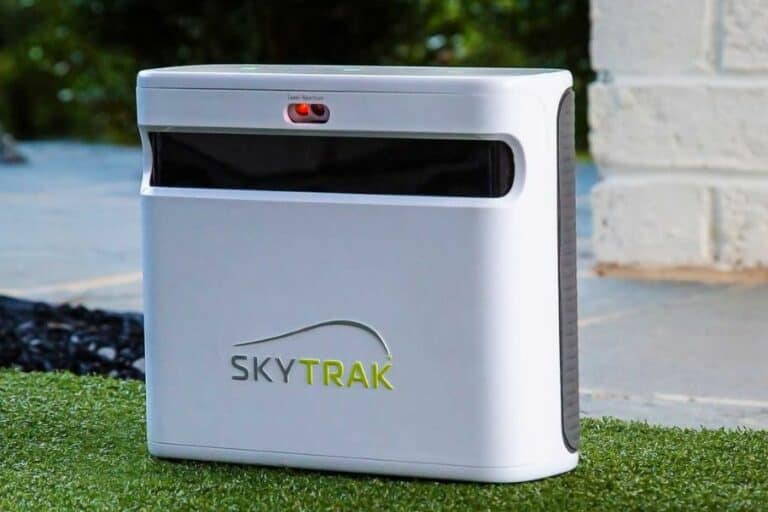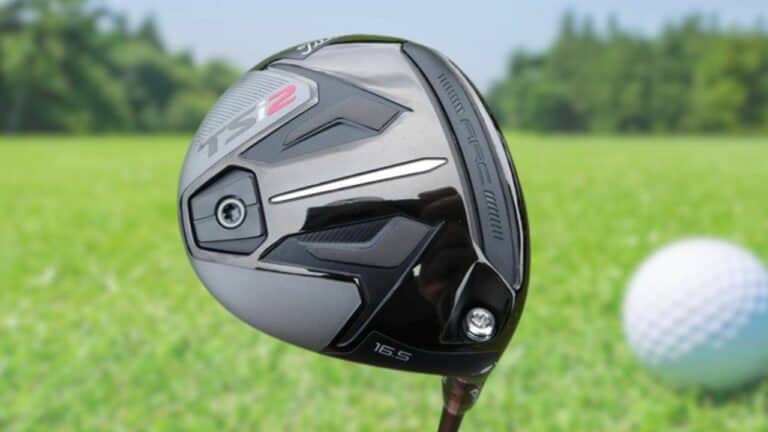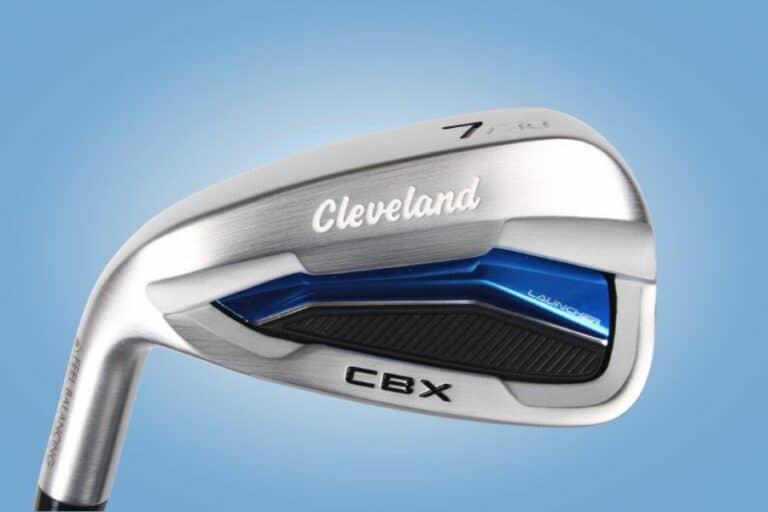TaylorMade Sim Max Irons Review
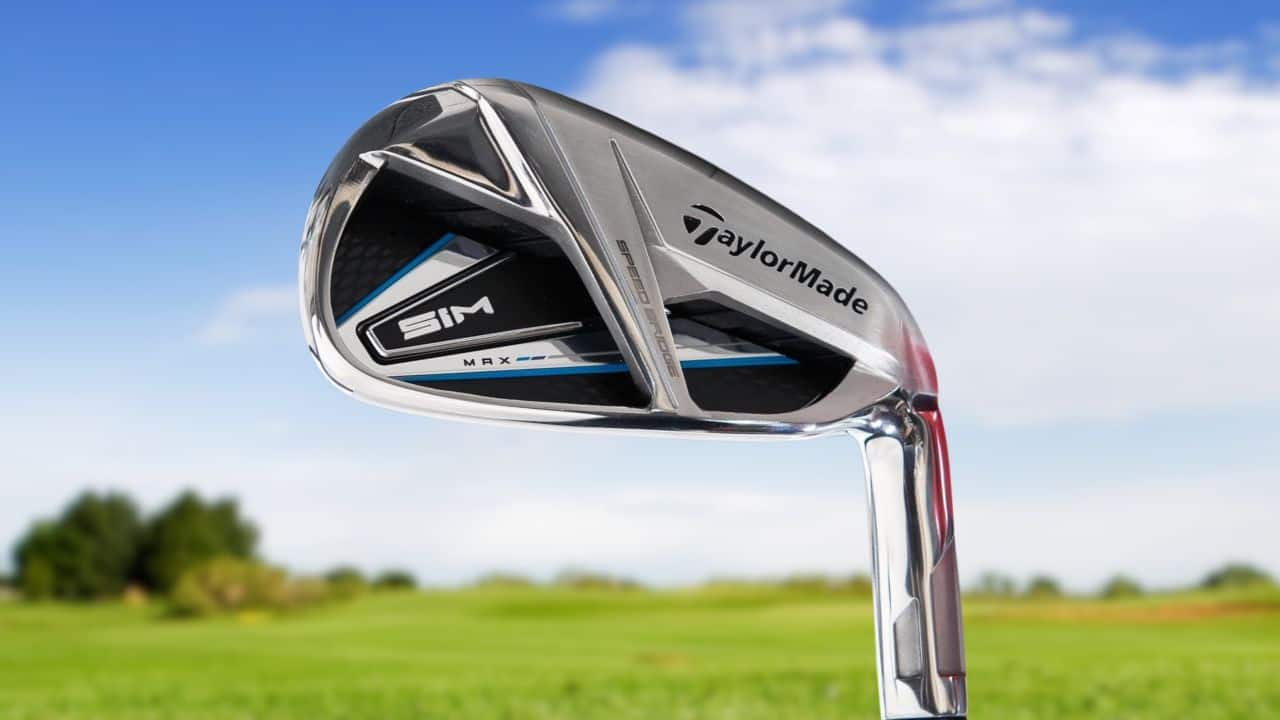
My First Impressions
The TaylorMade SIM Max Irons, with their advanced technologies, gave me a very futuristic look. They are designed with an energy channeling geometry that eliminates harsh vibrations upon impact.
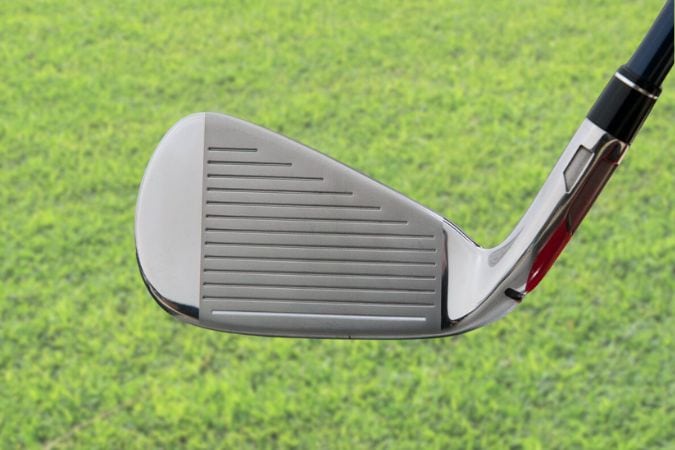
I looked forward to experiencing the benefits of the large face area, which should contribute to increased stability during the strike. Additionally, the wide sole geometry is an appealing feature that I anticipated will offer forgiving turf interaction, potentially improving my performance on a range of lie conditions.
Who is it for ?
- Suitable for mid to high handicappers.
- Golfers looking for increased distance and forgiveness.
- Players who want a higher launch and straighter ball flight.
My Profile
- Average Score: 78
- Handicap: 8.5
- Hand Orientation: Right-Handed
- Golfing Experience: 8 years
Club I Used:
- Model Name: TaylorMade SIM Max Irons
- Club Tested: 4-9 Iron
- Loft Setting: 19° – 38°
- Shaft Type: The KBS Max 85, Graphite
- Shaft Flex: Regular
My Test Conditions and Setup
Range Facilities:
- High-quality turf hitting bays.
- Premium range balls for consistent performance.
- Advanced launch monitor technology for accurate shot tracking.
Weather Conditions During Testing:
- Wind: Light breeze at 5 mph
- Temperature: 70°F (21°C)
- Humidity: 60%
On Course Performance Review
As I went on my round with the TaylorMade SIM Max Irons in hand, I was excited to see how the thinner face and design enhancements would translate to real-world performance. Here’s a detailed review:
Performance Off the Tee:
- Distance: The 7-iron from the SIM Max set, consistently delivered shots in the 170-180 yard range. This level of distance felt good and was also reliable, shot after shot.
- Trajectory: The high ball flight provided by the SIM Max Irons was nice, particularly in windy conditions. The ball soared with a high trajectory, maintaining both height and stability.
- Accuracy: The irons provided consistent accuracy, with the majority of my shots landing reassuringly close to the intended target line.
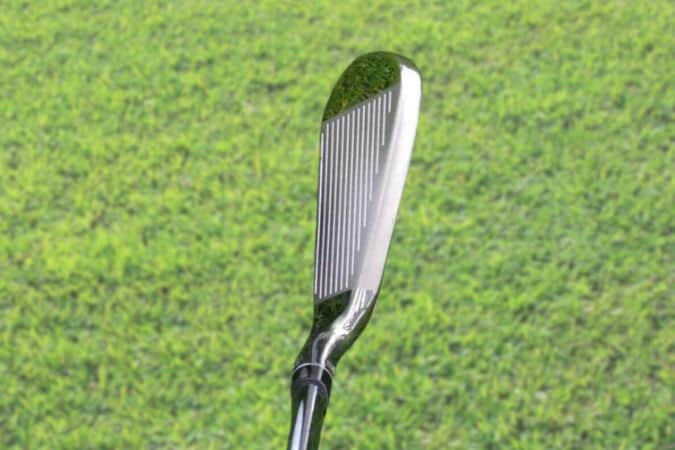
Rough and Recovery Shots:
- The irons handled challenging lies in the rough effectively, making recovery shots less daunting.
- Despite the thicker grass, the wide sole of the SIM Max Irons helped to maintain speed and launch for solid performance under difficult conditions.
My Test Stats
For a more comprehensive analysis, I used the Flightscope Mevo+ simulator with this club. Here’s a detailed breakdown of my test statistics:
| Parameters | My Stats |
| Ball Speed | 127.5 mph |
| Clubhead Speed | 95.2 mph |
| Launch Angle | 14.5 degrees |
| Spin Rate | 5164 rpm |
| Peak Height | 31 yards |
| Carry Distance | 183.1 yards |
With a clubhead speed registering at 95.2 mph, these irons have helped me achieve solid contact more consistently. The launch angle of 14.5 degrees created a great trajectory, which was a significant factor in adding those extra few yards.
Reaching a height of 31 yards ensured my shots had a soft landing, and the average carry of 183.1 yards meant I was consistently closer to the pin.
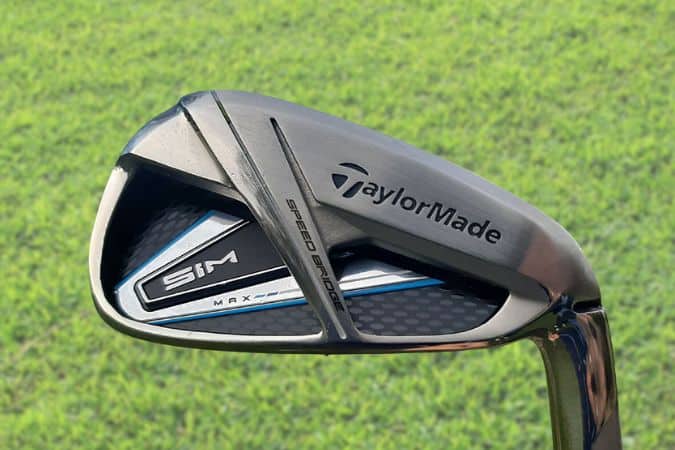
Moreover, the sleek design and forgiving nature of these clubs gained an extra layer of confidence to my play.
What I liked about Sim Max
- Distance: The Speed Bridge Technology in the SIM Max Irons increased my shot distance, making these clubs quite reliable on the golf course.
- Forgiveness: The ECHO Damping System and Speed Pocket together made sure that even my not-so-great swings ended up as decent shots, helping me avoid difficulties from challenging positions.
- Feel: Despite being a game-improvement iron, it still gave a pleasing sound and feel when hitting the ball, similar to traditional forged irons.
- Launch: With loft settings ranging from 19° to 38° across the 4-9 irons, I found that the ball flight was consistently high. This helped me in achieving maximum distance, particularly with the long irons.
- Spin: The SIM Max Irons produced spin rates that were easy to handle and helped with control near the greens. This balance of spin allowed for easier execution of different shots, including full swings and gentle chips.
- Shaft Performance: The KBS Max 85 shaft provided a smooth feel throughout the swing, contributing to the overall playability of the clubs. Despite being lightweight, it offered stability and helped in generating speed without compromising on accuracy.
What I didn’t like about Sim Max
- Control: The trade-off for increased distance was a slight loss in shot precision, which made it challenging to place the ball as accurately as I would have liked.
- Workability: These irons are designed for straight shots, which is great for consistency but limits my ability to shape shots creatively on the course.
- Wide Sole Design: Although helpful in the rough, the wide sole could sometimes cause the club to bounce into the ball on tight lies.
Alternatives
The needs of every golfer are unique and different. Here’s some of my other recommended alternatives that you can consider for your game:
1. PXG 0211 Irons
In my recent experience with the PXG 0211 Irons, I found them to be a good alternative to the TaylorMade Sim Max Irons. They have a progressive set design where each club is optimized for performance. This versatility makes them suitable for players who want a balanced set that can handle a variety of shots.
2. Callaway Steelhead XR Irons
The Callaway Steelhead XR Irons offer a solid alternative to the TaylorMade Sim Max Irons. These irons are particularly suited for golfers who are in search of a combination of traditional styling and modern technology, making them perfect for mid to high-handicappers.
My Take
The Sim Max Irons are ideally suited for mid-to-high handicappers in search of game improvement. Their high launch, increased spin, and overall performance of these irons make them a compelling choice for golfers who are eager to take their game to the next level.




